Apostolos Argyris
Experimental demonstration of bandwidth enhancement in photonic time delay reservoir computing
Jan 11, 2023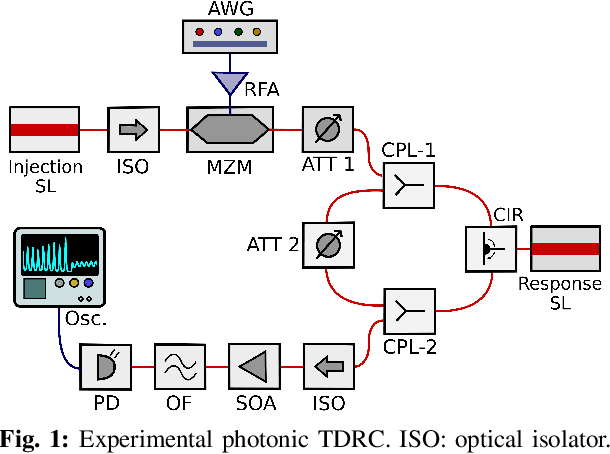
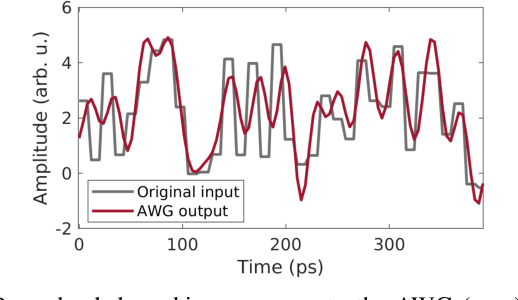
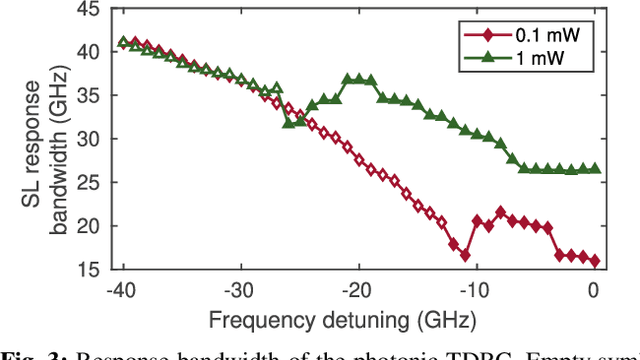
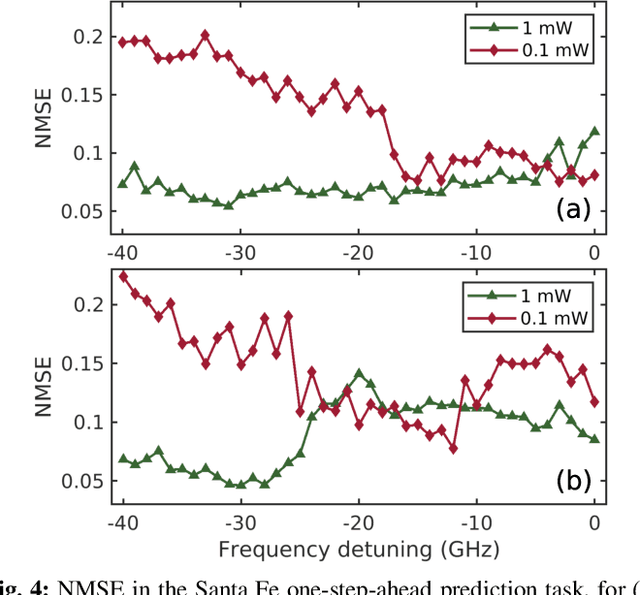
Abstract:Time delay reservoir computing (TDRC) using semiconductor lasers (SLs) has proven to be a promising photonic analog approach for information processing. One appealing property is that SLs subject to delayed optical feedback and external optical injection, allow tuning the response bandwidth by changing the level of optical injection. Here we use strong optical injection, thereby expanding the SL's modulation response up to tens of GHz. Performing a nonlinear time series prediction task, we demonstrate experimentally that for appropriate operating conditions, our TDRC system can operate with sampling times as small as 11.72 ps, without sacrificing computational performance.
Microring resonators with external optical feedback for time delay reservoir computing
Sep 23, 2021



Abstract:Microring resonators (MRRs) are a key photonic component in integrated devices, due to their small size, low insertion losses, and passive operation. While the MRRs have been established for optical filtering in wavelength-multiplexed systems, the nonlinear properties that they can exhibit give rise to new perspectives on their use. For instance, they have been recently considered for introducing optical nonlinearity in photonic reservoir computing systems. In this work, we present a detailed numerical investigation of a silicon MRR operation, in the presence of external optical feedback, in a time delay reservoir computing scheme. We demonstrate the versatility of this compact, passive device, by exploiting different operating regimes and solving computing tasks with diverse memory requirements. We show that when large memory is required, as it occurs in the Narma 10 task, the MRR nonlinearity does not play a significant role when the photodetection nonlinearity is involved, while the contribution of the external feedback is significant. On the contrary, for computing tasks such as the Mackey-Glass and the Santa Fe chaotic timeseries prediction, the MRR and the photodetection nonlinearities contribute both to efficient computation. The presence of optical feedback improves the prediction of the Mackey-Glass timeseries while plays a minor role in the Santa Fe timeseries case.
56 GBaud PAM-4 100 km Transmission System with Photonic Processing Schemes
May 17, 2021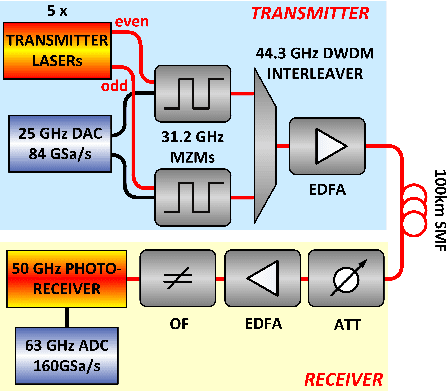
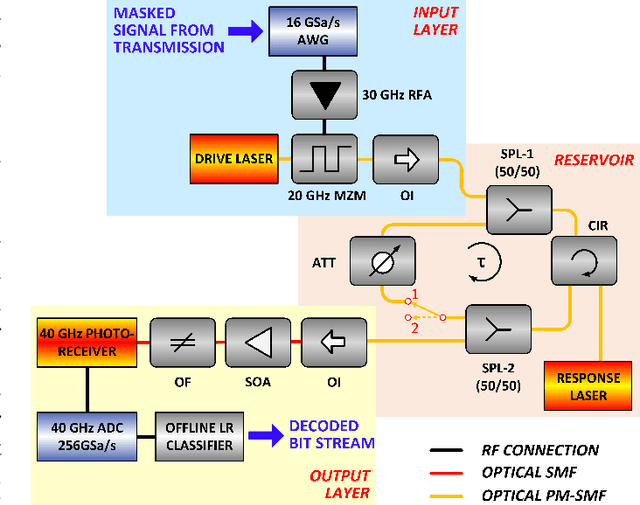
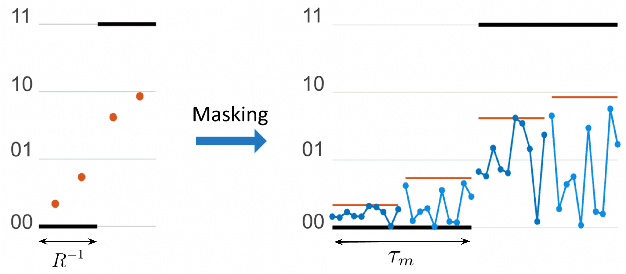
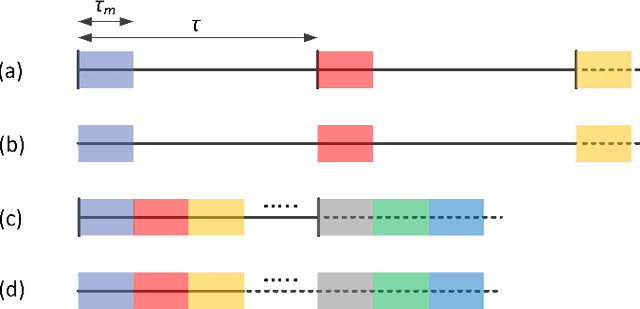
Abstract:Analog photonic computing has been proposed and tested in recent years as an alternative approach for data recovery in fiber transmission systems. Photonic reservoir computing, performing nonlinear transformations of the transmitted signals and exhibiting internal fading memory, has been found advantageous for this kind of processing. In this work, we show that the effectiveness of the internal fading memory depends significantly on the properties of the signal to be processed. Specifically, we demonstrate two experimental photonic post-processing schemes for a 56 GBaud PAM-4 experimental transmission system, with 100 km uncompensated standard single-mode fiber and direct detection. We show that, for transmission systems with significant chromatic dispersion, the contribution of a photonic reservoir's fading memory to the computational performance is limited. In a comparison between the data recovery performances between a reservoir computing and an extreme learning machine fiber-based configuration, we find that both offer equivalent data recovery. The extreme learning machine approach eliminates the necessity of external recurrent connectivity, which simplifies the system and increases the computation speed. Error-free data recovery is experimentally demonstrated for an optical signal to noise ratio above 30 dB, outperforming an implementation of a Kramers-Kronig receiver in the digital domain.
 Add to Chrome
Add to Chrome Add to Firefox
Add to Firefox Add to Edge
Add to Edge